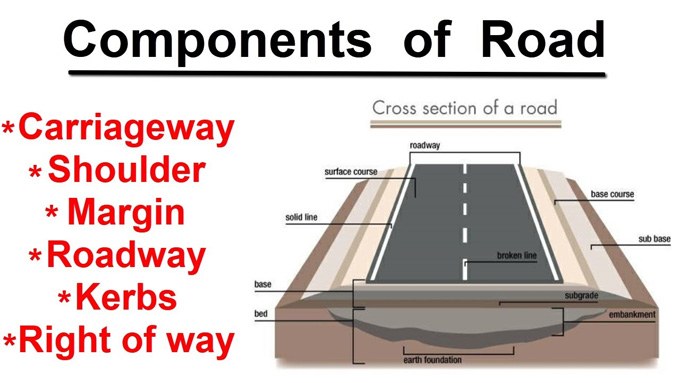
Importance and Types of Carriageway in Roads

The carriageway consists of the width of the road in which the movement of the vehicles is not restricted by any kind of separations or physical barriers. The carriageway consists of a number of traffic lanes. In this context, the number of traffic lanes and the width of the traffic lanes influence the width of the carriageways.

The traffic lane in the carriageway refers to that specific portion which has planned for the one-line movement of the traffic. The number of traffic lines in the carriageway has been decided on the basis of the type of roads, the density of the traffic and the service importance of the road.
The width of the carriageway helps to determine the available space in the road for the frequent movement of traffic. Thus, the carragieway directly influences the traffic flow on the road, the safety of the road and the overall performance of the road. The width of the carragieway should be designed properly to ensure the efficient use of the road space and to support the load-bearing capacity of the roads.
Discuss the importance of the Carraigeway in the road
Ensuring road safety
The carriageway helps to provide a smoother and safer surface area on the road for the safer movement of vehicles. The well-maintained carriageway helps to reduce the risks of accidents on the road by reducing the risks of sliding, skidding and hydroplaning. Thus, the carriageway helps to improve the overall safety of the road network.
Maintaining long-term durability of the road
The surface of the carriageway is durable and lasts for a longer period of time. The cross slope of the carriageway helps to drain the water from the road surface, which helps to protect the pavement from deterioration and helps to allow the road surface to dry faster.
Ensuring a clear and visible path
The carriageway helps to provide a clear and visible path for the driver of the vehicles, which allows the driver to make necessary adjustments on the road while driving, thus reducing the risks of road accidents.
Providing a predictable and consistent road surface
The carriageway helps to provide a predictable and consistent surface area on the road, which is very important for drivers to anticipate any changes in the road surface. The consistent surface of the carriageway also helps to reduce the chances of driver fatigue, which can be a major factor in road accidents.
Maintaining the structural integrity of the road
The carriageway has been designed to resist the loads of the passing vehicles. In addition, there is a proper drainage system in the carriageway, which helps to protect the underlying sub-grade from the damage of water.
Improving road capacity
The carriageway helps to determine the space availability on the road for the free movement of vehicles. In addition, the carriageway allows for multiple lanes in the road, which helps to enhance the capacity of the road, thus allowing faster vehicles to pass slower ones. The efficient use of the road space depends upon the well-designed width of the carriageway.
Improving traffic management
The width of the carriageway and the number of traffic lanes on the carriageway have been designed on the basis of the expected traffic volume and the type of road. A clear and well-visible path has been provided by the carriageway, which helps to reduce the confusion of the driver while they are driving on the road, thus helping to manage the traffic on the road.
Learn about the different types of carriageways on the road
The carriageway is constructed in different types, which are as follows:
Standard Network
The standard network road is a common type of carriageway, which refers to a regular two-way road with one lane in each direction. These types of carriageways have been used for the general movement of traffic on the road.
Dual Carriageway
The dual carriageway refers to a road with two separate lanes. These types of carriageways enable the movement of traffic in opposite directions. The dual carriageway has been divided by a median in general.
Ramp (On or Off)
The Ramp refers to the short road section, which enables vehicles to enter on the ramp or exit a larger road, such as a highway.
Roundabout
The roundabout is another type of carriageway which has a circular road layout, in which the traffic moves in one direction around the central island. These types of carriageways have been used to manage the intersections. A major roundabout helps to provide approaches which have splitter islands.
To learn more, watch the following video tutorial.
Video Source: Civil Engineering
Accessway
The accessway refers to the smaller road or driveway, which helps to connect the local roads or properties to the main road network. The accessway is often used for private or local access.


